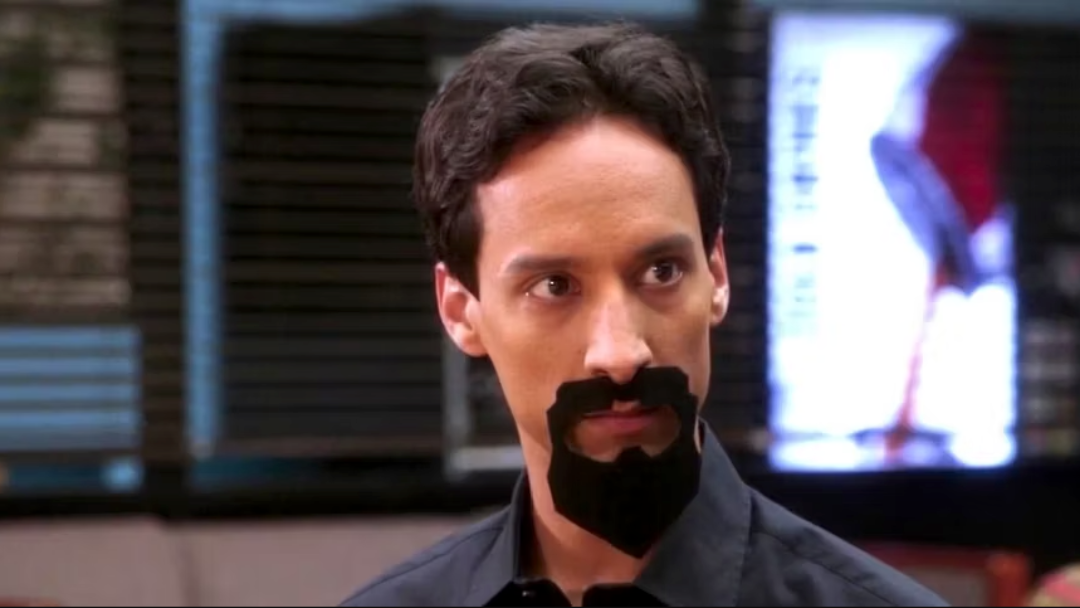In terms of story, every character needs an antagonist to push them beyond the person they currently are and into the person they’re going to become. It’s why the character must go through a series of obstacles to tests their will to succeed. While many people call these series of events the ‘Road of Trials’, the part of the story where the main character and their group of friends must train and/or prepare for the journey ahead: even if that means they aren’t physically lifting weights and/or sparing; others are going to call these series of events ‘Meetings with the Antagonist’. While both are accurate, to a sense, it’s going to be easier to understand the connection if the idea of an Antagonist is broken down into two separate categories.
The First Category: The Long-term Antagonist:
This is the over-arching villain in the story. Basically, the main source of evil in all the land, and until it is stopped there’re always going to be threats against peace and happiness.
For literary references, think Sauron in the, Lord of the Rings, trilogy by J.R.R. Tolkien, or even Big Government in the American Classic, 1984, by the infamous George Orwell.
The Second Category: The Short-term Antagonist:
This is the immediate danger, and/or obstacle, the main character is going to face in any given scene. It’s normally comprised of multiples parts, and layers, and these’re the events that help shape the main character into someone better.
Staying on the theme for examples, the short-term antagonist can range from talking to a woman who makes the heart flutter, 1984, to a pack of wild Orc who roaming the rolling lands unchecked, and unchallenged, The Lord of the Rings, trilogy.
It’s why the Road of Trials can either be filled with one Long-term antagonist, the main villain who throws different traps and schemes in the character’s way, or it can be filled with multiple short-term antagonists: raging rivers, heavy mudslides, traps doors, spiders, poisonous snakes all of which are guarding hidden treasure.
So. Yes. It’s true. Every story needs a villain. It needs its multiple antagonists to battle the main character, all the way up until the final conflict because it’s both the Long-term and the Short-term antagonists that drive the main character forward. They’re the physical representation of everything the main character must go through to get what he/she wants because each one of the antagonists is a meta-physical Shadow inside the main character: something they must conquer, not just physically, but mentally within themselves, all so they can transcend above the person they were before their adventures, and, thus, understand there’s always going to be a better version of themselves for tomorrow.
Before moving on, first understand the idea of the Shadow: or the Shadow-self. Even though it was first and, formally, introduced by Carl Gustav Jung, in his, Conscious, Unconscious, and Individuation, story tellers, and philosophers, have been using this idea for quite some time: Yin, Ying: God, and the Devil. But, this idea of the Shadow-self, the physical representation of everything that is evil within a person, culture, society, and/or humanity, has been re-worked into the contemporary movement for the objective use of fitting a new plethora of facets for both the literal and literary worlds.
To help prove this point, think about, Harry Potter, in any one of his books and/or movies. In both the literary and the cinematic formats, there’re too many scenes where Harry learns Lord Voldemort is a part of him: he’s a part of Lord Voldemort; they’re both one in the same, co-existing at the exact same time, but with zero chance of co-habitation because one cannot exist while the other is surviving: the classic dependent and independent moralities. It’s why Harry must literally kill himself to have a shot at defeating Voldemort. If he doesn’t do this, Voldemort is always going to have a way to come back to both the wizarding world and the muggle world, which means no one is ever going to be safe.
However, with that said, some of the best villains are not the most dangerous. They are not even the ones who are the most cunning. Instead, they are the broken humans of the world. They are the broken people the audience can humanize with, empathize with, sympathize with, because the audience is just like them, broken from family history, or rotten love, or too many thoughts clouding the mind. It’s what allows them to mourn the loss of their life, rather than rejoice at their death. Frankenstein and his Monster is a perfect example of this idea. Even though they are both considered grotesque monsters: one going far enough to hack and mutilate dead bodies to stitch one another together, and the other being a new person compiled from different people; the idea of finding humanity in the grotesque is the very essence of their being.
With these ideas in mind, turn the focus to NBC’s Television Comedy Series, Community. It’s amazing how the Greendale Seven: Jeffrey Winger, Abed Nadir, Britta Perry, Annie Edison, Shirley Bennet, Troy Barnes, and Pierce Hawthorn; have faced more than a handful of antagonists in their first three seasons, ranging from Professor Chang to Dean Spreck, but they’ve yet to meet their own worst antagonist. Even though there’re multiple examples for how City College, Chang, Todd, and the school itself acts as both the Long-term and Short-term antagonists for the Greendale Seven, none of them are prepared for the worst of the worst in Season 4. It’s when Community decides it’s going to design the ultimate antagonist: the group itself; and then it uses the entire season to help illustrate how the group encompasses the ideas above: spanning from broken people to one large evil looming over everything.
Episode 1: History 101; of Season 4, is a prime example for this premise. Here, in this episode, the group itself is gearing up for their last year at Greendale and, with Britta becoming Abed’s new therapist, she becomes the main reason he recedes into his own mind for most of the episode. Luckily for Abed, he is talented enough, strong enough, and conscious enough to keep his ties with reality. Had he severed that tie, and fallen into complete trust with Britta, he might still be stuck in that catatonic state, dreaming of, Greendale Babies, and all their adventures. However, Britta is not the only antagonist in this episode. Troy, Annie, and Jeff, each act as a villain and each one of them go far enough to yell at the person and/or people they are currently with.
Episodes 12: Heroic Origins; is where everything gets all too real for the Greendale Seven. Here, the group solidifies their role as the long-term antagonist for Season 4. Even though every episode in this season, up until this point, has given at least one example for why the group is their own worst enemy, in this episode, Abed uses his analytical skills to trace the single reason for why everyone is at Greendale: going back far enough to a time when Jeff is still a Lawyer, Shirley has yet to divorce Andre, and both Troy, and Annie, are still in High School. However, the more Abed dives into the Heroic Origins of the group, the more he realizes that the driving antagonist of their story is not some outside force. Rather, it is the study group itself and it all started with him.
So, regardless of the group, or the main character, being a short-term antagonist, or even a long-term antagonist, it’s important for stories to have both. It’s why one should not get wrapped up in the idea of creating one, big, bad, evil person and/or monster who’s out to destroy the world and everything inside of it. Even though stories love to use the idea of a singular evil that’s outside of the main character, the best antagonist doesn’t need to be an outside source trying to condemn the main character and their group of friends. For most characters, the long-term antagonist is their own self, and the short-term antagonist is their own mind: believing the decisions they are making are for the better, when––in all reality––it’s for the worst.
GREGORY GONZALEZ graduated from Sierra Nevada University, where he earned both a BFA and an MFA in Creative Writing. While studying under many other wonderful artists: Brian Turner, Patricia Smith, Gayle Brandeis, and Sunil Yapa; he’s never felt limited to a single genre. His love for creative-nonfiction mirrors his love for film, and tv, which stemmed from a desire to tell fictitious stories. His other works can be seen in a variety of houses, including the San Joaquin Review Online, Hive Avenue: A Literary Journal, the Dillydoun Review, Wingless Dreamer Publishing, Drunk Monkeys: Literature and Film, Causeway Literature, and––yes––even here at, Bridge Eight: Film & TV, where he discusses character and the classic roll of the anti-protagonist.
Like what you’re reading?
Get new stories or poetry sent to your inbox. Drop your email below to start >>>
OR grab a print issue
Stories, poems and essays in a beautifully designed magazine you can hold in your hands.
GO TO ISSUESNEW book release
Ghosts Caught on Film by Barrett Bowlin. Order the book of which Dan Chaon calls “is a thrilling first collection that marks a beginning for a major talent.”
GET THE BOOK



